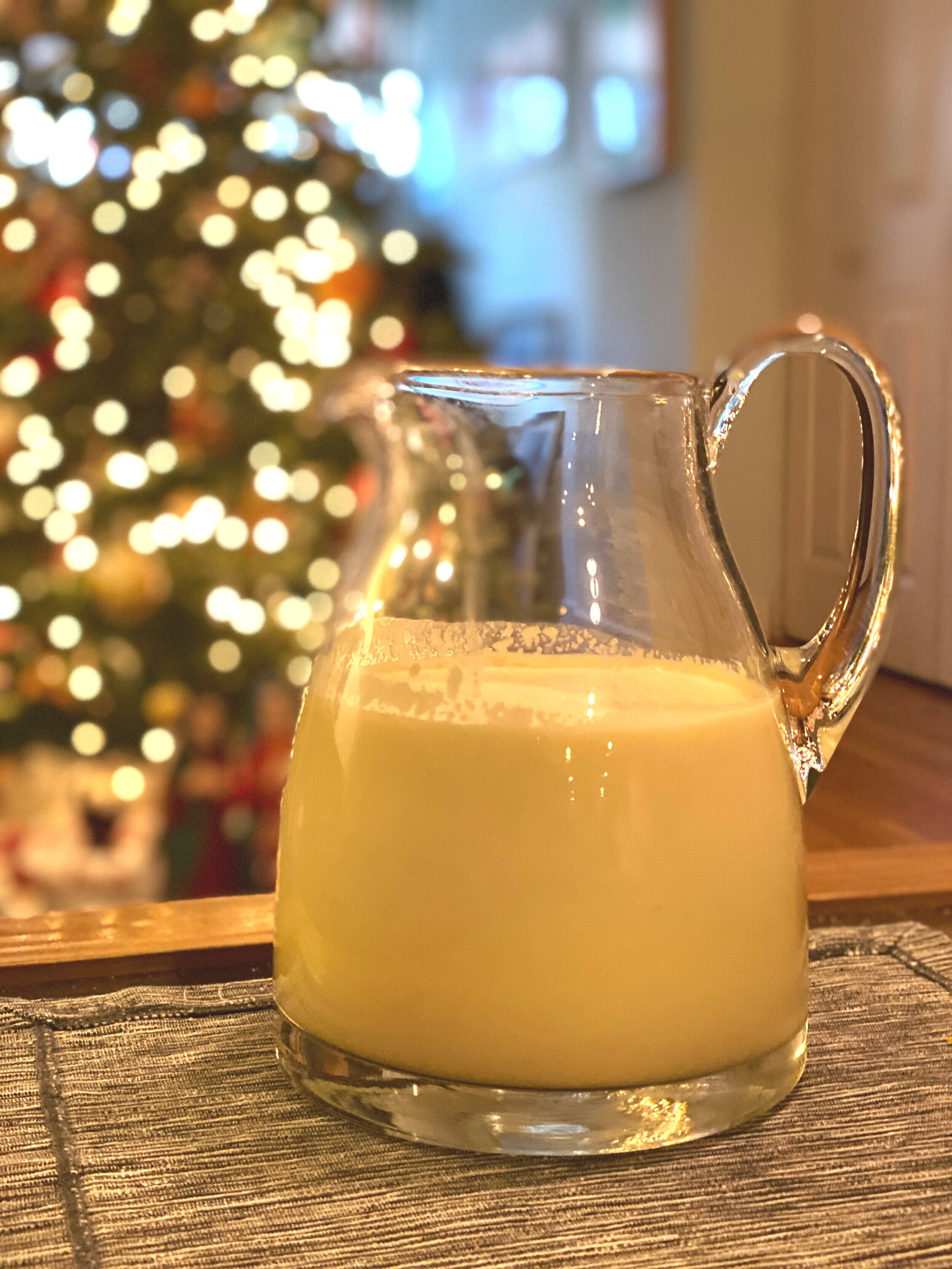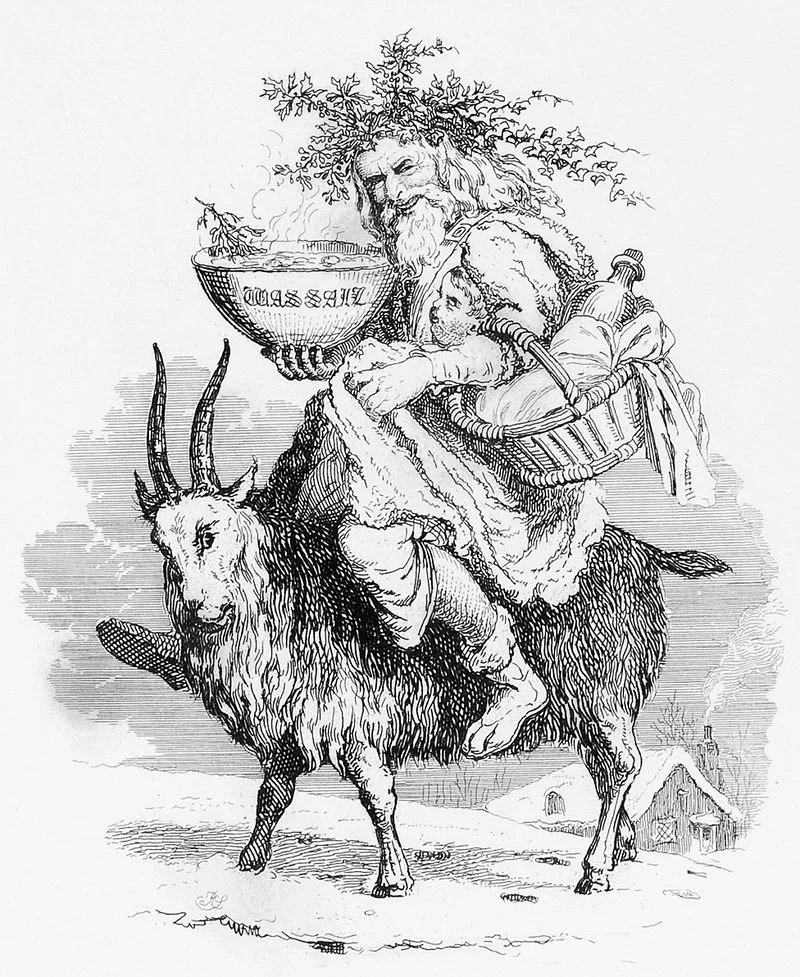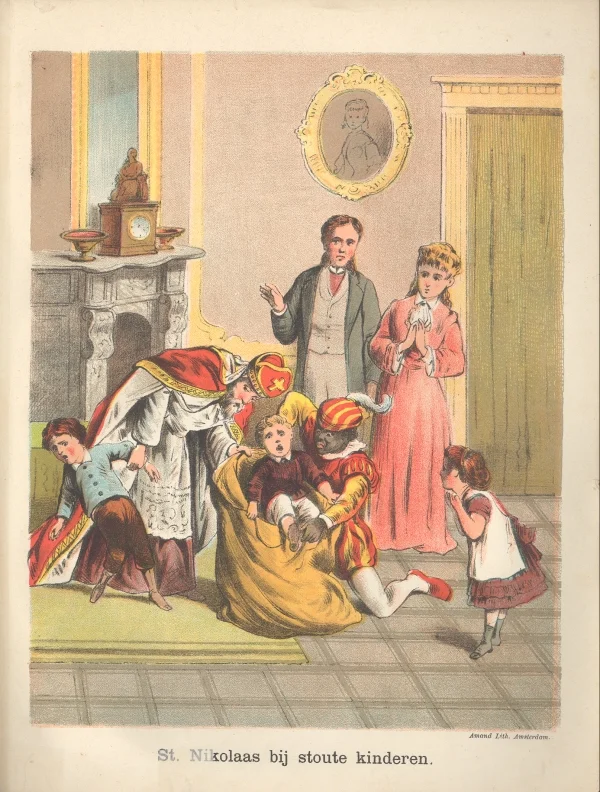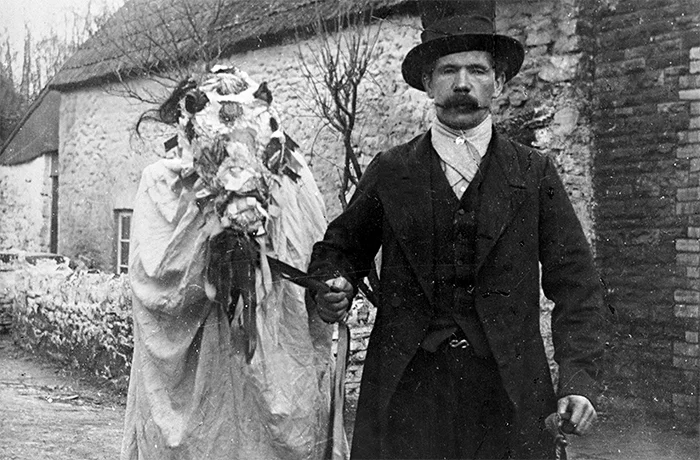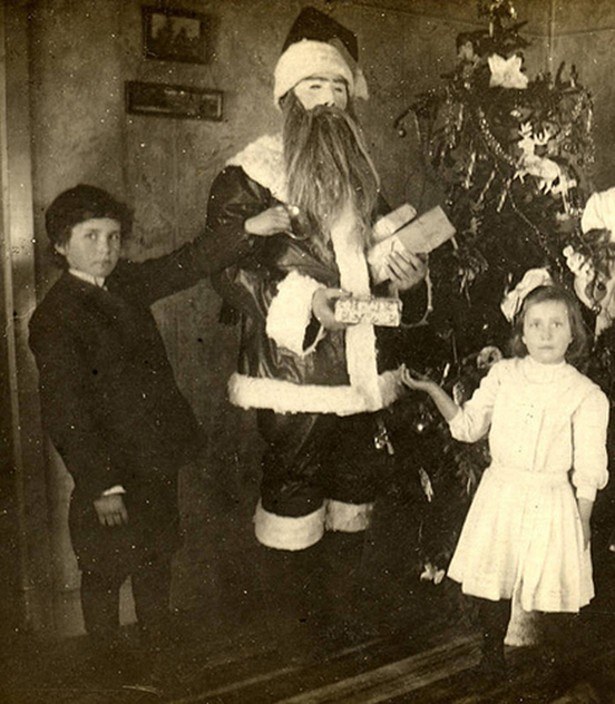The ultimate guide to Yule for Wiccans, with rituals, spellworks and history to honor the sun’s rebirth and embrace the magic of renewal and light.
The world outside is blanketed in silence. Snow falls softly, covering the earth in a thick, sparkling layer of white. The air is crisp and biting, your breath visible as it rises in little puffs. The trees, bare and skeletal, stretch their branches toward the sky like ancient sentinels standing watch over the longest night of the year. Above, the full moon hangs heavy, casting an ethereal glow over the frozen landscape, while the stars twinkle like distant flames in the deep, velvety sky.
It’s Yule, the Winter Solstice, the longest night and shortest day of the year. As the world sits in quiet darkness, a sense of anticipation builds. This night marks not only the peak of winter’s cold embrace but also the moment when the sun begins its slow return. From this point onward, the days will lengthen, and light will slowly reclaim its place, reminding us that even in the darkest of times, warmth and life are never far behind.
For Wiccans and many pagans, Yule is a celebration of this return of the sun, the rebirth of light and the turning of the Wheel of the Year. It’s a time to gather around the fire with loved ones, to reflect on the year gone by and to welcome the new beginnings that are yet to come. The fire burns bright in the hearth, candles flicker on windowsills, and evergreens — symbols of eternal life — adorn homes, filling the air with the crisp, fragrant scent of pine and holly.
Yule invites us to embrace the stillness of winter, to honor the darkness, and to celebrate the hope that the sun will rise again, bringing light, warmth and growth. Whether you light a candle to honor the sun’s rebirth, feast with friends and family, or simply sit in quiet reflection, this guide will walk you through the history, traditions and rituals that make Yule a magical and deeply meaningful celebration.
The Myth of Yule
Ah, Yule — the festival where, much like the phoenix, the sun rises from its metaphorical ashes and decides it’s had enough of lounging around on the other side of the world. But, like all good tales, this one involves conflict — a dramatic showdown between two competitive gentlemen: the Oak King and the Holly King.
The Oak King, representing the light half of the year, and the Holly King, his darker, moodier counterpart, have been at it for eons — locked in a rivalry as old as time. Think of them as cosmic frenemies, each vying for control of the sky, though it’s a bit more theatrical than your standard sibling squabble. Twice a year, they meet for their biannual smackdown. The setting? The solstices. The stakes? Oh, nothing major — just the fate of the entire year’s light cycle.
Now, at Yule, the Holly King is feeling pretty smug. He’s been reigning supreme since the Summer Solstice, when he decisively put the Oak King in his place and sent him packing. He’s ruled over the dimming days, the dark nights and the frosty weather like a boss. But, as we reach the winter solstice, the Holly King’s grip starts to weaken. The days have been getting shorter and shorter — but there’s a catch. You see, just when the Holly King reaches the pinnacle of his power, the Oak King, ever persistent, stages his comeback.
On the longest night of the year, the battle resumes. The Oak King, brushing off snowflakes and armed with a gleaming axe, steps onto the stage. The Holly King, not to be outdone, draws his sword, his eyes glinting with cold determination. They clash — icy winds howl, snow swirls, and for a moment, it’s anyone’s game. Ultimately, it’s time for the Holly King to take a backseat. He’s had a good run, but the Oak King’s time has come. As the first rays of dawn break over the horizon, it’s clear: The sun is reborn, and the Oak King is back in business.
And so, the wheel of the year turns again. The days will grow longer, the sun stronger, and the world will start to thaw. Don’t worry about the Holly King, though; he’ll bide his time until midsummer, when he’ll no doubt make his grand return, all dark capes and icy glares, ready to steal the show once more.
So, as you light your Yule candles or toss a log on the fire, remember the eternal tug-of-war between light and dark, life and death, warmth and cold. And perhaps raise a glass to the Oak King, who, once again, has saved us from the endless night — at least for the next six months.
Symbols and Correspondences of Yule
Yule is positively brimming with symbols, each wrapped in centuries of lore and ready to be unwrapped like a Christmas gift. Let’s take a look at a few of these festive icons, each carrying its own bit of magic, meaning and mystery.
Evergreens (Holly, Ivy, Mistletoe): Symbols of Eternal Life and Protection
Ah, evergreens — the overachievers of the plant world. While everything else is shriveling, freezing or just giving up entirely for the winter, evergreens stand tall, a verdant middle finger to the cold. Holly, ivy, mistletoe, pine — they all have one thing in common: They refuse to go quietly into the night. The Celts thought this was so impressive they decided evergreens must be magical, symbolizing eternal life. Holly, with its shiny leaves and scarlet berries, was believed to ward off evil spirits. Mistletoe, a parasite, sure, but a charming one, was hung up in homes to offer protection (and, naturally, a socially acceptable excuse for a kiss).
So, when you deck the halls with boughs of holly or hang up that mistletoe, you’re not just decorating — you’re invoking ancient protective powers.
Candles and Fire: Symbols of Light’s Return
At Yule, candles and fires aren’t just for ambiance or Instagrammable moments of cozy glow. These flames represent something far more significant — the sun itself, and, more specifically, its triumphant return. In the darkest depths of winter, the simple act of lighting a candle was a declaration of hope. “Take that, longest night of the year,” it says. “The light will return, and when it does, we’ll be ready.”
The Yule Log: A Beacon of Hope and Renewal
In ancient times, families would drag in the biggest, sturdiest log they could find (preferably oak), place it in the hearth, and set it alight. The bigger the log, the longer the burn, and the longer the burn, the more protection, luck and prosperity for the household in the new year. Burned offerings — spices, wine, a bit of bread — would be thrown onto the flames, offering a little extra encouragement for the sun’s return.
Now, most of us don’t have massive hearths waiting for 20-pound logs, but that doesn’t mean we can’t enjoy a Yule log tradition. A simple candle, or even the famous chocolate Yule log (more commonly known as a bûche de Noël), will do the trick. Just be sure to send up a quick thank you to the ancient sun gods as you devour it.
Apples and Oranges: A Nod to the Sun
What’s more fitting for a sun-worshiping holiday than fruits that resemble, well, the sun itself? Apples and oranges, especially when studded with cloves, have long been used in Yule celebrations to symbolize abundance and the promise of the sun’s return. Hang them from your Yule tree or place them on your altar, and they’ll serve as a reminder that even in the depths of winter, the seeds of future growth are quietly preparing to sprout. Plus, they smell divine — an added bonus.
Sun Wheels: The Circle of Life (and Light)
The sun wheel, an ancient symbol that looks suspiciously like a festive wreath or a beautifully crafted pastry, represents the ever-turning wheel of the year and the rebirth of the sun at Yule. Made from woven branches or even metal, sun wheels were sometimes burned as offerings to ensure the sun’s strength in the coming year. These days, they’re more likely to adorn doors, windows or mantles, reminding us of the cyclical nature of life, death and rebirth.
So, when you hang your wreath this Yule, you’re not just decorating for the season — you’re participating in a centuries-old tradition celebrating the eternal cycle of light and darkness.
Yule Ritual: Casting a Spell for Renewal and Protection
At Yule, dive into the heart of Wiccan magic and cast a spell that harnesses the energy of the sun’s rebirth. This spell will help you clear away the remnants of the dark half of the year and invoke protection, renewal and strength as the days grow longer.
What You’ll Need:
A gold or yellow candle
A black candle
Bay leaves
Cinnamon sticks
Evergreen sprigs
A bowl of water
A small mirror
A piece of red string or ribbon
Step 1: Set the space.
Begin by setting up your altar or sacred space with the candles, bay leaves, cinnamon sticks, evergreens, and the mirror. Make sure your space feels powerful and magical. Dim the lights, light some incense, and play soft music if that enhances your focus. Cast a magic circle if you’d like.
Hold the gold candle in your hands and visualize the energy of the sun, glowing and full of life. Feel its warmth radiating through your palms, filling you with strength. Place the candle on your altar and say:
On this longest night, I call upon the light of the sun to return, bringing warmth, growth and renewal.
Now, place the black candle next to it, symbolizing the darkness you’re releasing. Light it and say:
I release all that no longer serves me, clearing the path for new beginnings.
Step 2: Create a protective charm.
Take the bay leaves and cinnamon sticks and bind them together with the red string. As you tie the bundle, focus on the protective energy you’re weaving into it. Imagine it creating a shield around you that will carry you through the rest of winter.
As you do, say:
With this charm, I cast a circle of protection. By the power of fire and earth, air and water, I call upon the ancient forces to guard me and mine.
Hold the charm over the flame of the black candle (without burning it) to draw out any lingering negativity. Then, place it beside the gold candle, allowing the sun’s energy to charge it with power.
Step 3: Cast a spell of renewal.
Now, take the bowl of water and place it in front of the gold candle. Hold the mirror so that it catches the candlelight and reflects it into the water. This symbolizes the sun’s light returning to the Earth and bringing renewal with it. As you reflect the light, visualize the days growing longer and your spirit growing stronger.
Hold your hand over the water and say:
As the sun returns, so do I. I call upon the light to cleanse and renew. With the rising sun, I am reborn, stronger, wiser and protected.
Dip your fingers into the water and anoint your forehead, heart and hands, imagining yourself infused with the sun’s warmth and power. You are renewed, ready to step into the new year with strength and purpose.
Step 4: Seal the spell.
Blow out the black candle, signifying the end of the old year’s darkness. Let the gold candle burn a little longer, allowing its light to fill the room.
Take the protective charm you made, and hang it by your front door, in your bedroom or near your sacred space to keep the energy of Yule with you in the coming months.
Close the ritual by thanking the elements and the sun for their presence, saying:
I thank the light, the earth, the air, the water and the fire for their blessings and protection. As the wheel turns, so too do I step forward, renewed and guarded by the power of the sun.
When you’re ready, blow out the gold candle and keep the bowl of water near your altar until the next sunrise.
This ritual uses spellwork to actively clear away the dark energy of the past year while inviting in the protective, renewing power of the reborn sun. It blends Wiccan symbolism with practical magic and creates a lasting charm to carry the energy of Yule with you.
Feasting and Celebrating Yule: A Harvest of Warmth and Flavor
Yule is also about filling your home (and belly) with warmth, flavor and the essence of the season. The Winter Solstice may be the darkest night, but that’s no reason not to throw a feast! After all, what better way to welcome the sun’s return than with food that radiates comfort and prosperity?
Traditional Yule Foods: Hearty and Warming
At the heart of Yule is the tradition of feasting. In ancient times, communities would come together to share in the abundance of their harvest, creating meals that symbolized the warmth and life that would soon return with the sun. The foods of Yule are rich and hearty—designed to ward off the winter chill and celebrate the season’s bounty.
For your own Yule feast, you don’t need to go full medieval (though that could be fun). A modern Yule dinner could be as simple as a cozy, comforting meal shared with friends or loved ones.
By gathering to share food and drink, you’re honoring the cycles of life and death, darkness and light, and celebrating the promise of new beginnings. The table itself becomes a magical space where intentions for the coming year are set and blessings are shared.
Here are some classic Yule foods to inspire your feast:
Roasted meats: Think roasted beef, pork or chicken, seasoned with warming spices like cinnamon and cloves. These dishes evoke the strength and vitality of the returning sun.
Root vegetables: Potatoes, carrots, parsnips — these hearty, earthy vegetables represent the grounding energy of winter and the promise of future growth.
Mulled wine or cider: Spiced with cinnamon, cloves and oranges, these beverages are practically a hug in a cup. The warmth of the drink mirrors the warmth of the sun that will soon return.
Dried fruits and nuts: A staple for any Yule feast, they symbolize abundance and are perfect for snacking throughout the long night.
Yule log cake (bûche de Noël): This festive dessert is a nod to the ancient tradition of burning the Yule log — but it’s much tastier and a bit less flammable.
Winter stews and soups: Fill your home with the aroma of a slow-cooked stew, featuring root vegetables, beans and hearty meats. A thick, warming soup made with squash, pumpkin or potatoes can also be a perfect addition to your Yule table.
Holiday breads: Baking bread is a timeless ritual that honors the spirit of giving and abundance. Whether you’re making a simple loaf or a sweet, spiced bread with dried fruits, the process of kneading and baking is a magical one. For a special touch, consider adding a hidden charm to the dough. The person who finds it gets a blessing for the year ahead!
Gifts and Feasting: The Spirit of Generosity
If there’s one thing Yule is known for (besides the battle of cosmic brothers and setting logs on fire), it’s the feasting. Tables groan under the weight of hearty stews, roasted meats, spiced ciders and every baked good you can imagine. Why? Because Yule is about abundance, generosity, and celebrating the fact that we’ve made it this far into the dark and cold.
And then there are the gifts. While some modern traditions might have blurred the lines with Christmas, the ancient Yule spirit of giving was all about sharing what you had — whether that was food, drink or handmade tokens of goodwill. The act of exchanging gifts symbolized the abundance of the harvest and the warmth of community, ensuring everyone would be well prepared for the rest of winter.
This Yule, consider giving gifts that carry deeper meaning:
Handmade crafts or foods: Whether it’s a jar of homemade jam, a batch of spiced cookies or a knitted scarf, these gifts carry the personal touch that speaks to the heart of Yule.
Symbolic items: Think sun-shaped ornaments, candles, or small bundles of herbs for protection and warmth — gifts that celebrate the light and magic of the season.
As you exchange gifts, remember that this is a time to give from the heart, whether it’s something tangible or simply the gift of your presence and kindness. After all, Yule is as much about the warmth of community as it is about the return of the sun.
Yule Crafts and Activities: Channeling Your Inner Witchy Maker
Yule is the perfect time to get crafty — after all, what better way to spend a cold winter night? Whether you’re decorating your home or making charms for the season, these Yule crafts are more than just fun projects — they’re imbued with the power of renewal, protection and celebration.
Yule Sun Ornaments: Crafting Light for the Tree
Honor the rebirth of the sun by decorating your Yule tree with your own handcrafted sun ornaments. These shining symbols can be made with materials you probably already have lying around.
What You’ll Need:
Twigs or cinnamon sticks
Twine or yarn
Gold or yellow paint
Glue or a hot glue gun
Instructions:
Arrange your twigs or cinnamon sticks in a sunburst pattern, gluing them at the center. You can make it as simple or intricate as you like — get creative!
Once the glue has dried, paint the tips of the sticks in gold or yellow to represent the sun’s rays.
Tie a piece of twine or yarn to the center, creating a loop so you can hang your sun ornament on your Christmas tree.
Magical twist: As you craft your sun ornaments, focus on the energy of the sun returning. Each twig or cinnamon stick represents a ray of light, bringing warmth and renewal into your home. When you hang your ornaments, say:
I hang this sun with joy and light,
May it bless my home on the longest night.
Evergreen Protection Charms: The Magic of Nature
Evergreens are classic Yule symbols of protection and eternal life, and creating small charms from their branches is a powerful way to infuse your home with magical energy. These protection charms are not only magical but also beautiful and fragrant.
What You’ll Need:
Sprigs of evergreen (holly, pine, cedar or ivy)
Red ribbon or twine
Small bells or charms
Instructions:
Gather small sprigs of evergreen and tie them together with red ribbon or twine, creating a mini Yule bouquet.
For extra magic, attach a small bell or charm to your bundle. The bell helps ward off negative energy, while the charm can represent whatever energy you wish to invoke — protection, love or prosperity.
Hang your protection charms around your home — by the door, on windows, or even on your Christmas tree.
Magical twist: As you tie the ribbon, visualize the evergreen’s protective energy surrounding your home. Say:
With this charm, I call the Yule’s light,
To shield my home through day and night.
Guard it well with peace and grace,
Protect all hearts within this space.
Magical Spell Jars: Capturing Yule’s Energy
Yule is all about the rebirth of the sun, and a spell jar can help capture that energy to carry with you through the darker months. These little jars are packed with intention and can be customized with herbs, crystals and other magical ingredients.
What You’ll Need:
A small glass jar with a lid
Salt
Cinnamon
Bay leaf
Sunstone or clear quartz
A small yellow or gold candle
Instructions:
Layer the salt, cinnamon, bay leaf and crystal inside the jar. As you add each ingredient, focus on the intention you’re setting: protection, renewal or whatever energy you want to bring into your life.
Seal the jar and place it on your altar or near a window to catch the sunlight (or moonlight on Yule night).
Light the yellow or gold candle and drip some of the wax on the lid to seal the magic inside.
Magical twist: Hold the jar in your hands and say:
By the power of Yule, I capture the light,
To guide me through the darkest night.
With sun and warmth, this spell is cast,
May its magic endure and forever last.
Yule Wreaths: Weaving Magic and Life
A wreath made from evergreens, holly and ivy acts as decoration as well as a circle of life and magic, representing the neverending cycle of the seasons. Weaving your own Yule wreath is a beautiful way to welcome the season’s energy into your home.
What You’ll Need:
A wire wreath frame (or bendable branches to form a circle)
Evergreen branches (holly, pine, cedar, ivy)
Red ribbons or berries
Small ornaments, cinnamon sticks or dried orange slices (optional)
Instructions:
Weave the evergreen branches into your wreath frame, securing them with twine or wire. Take your time, letting the process be meditative and magical.
Add your decorations — ribbons, berries, ornaments — anything that feels festive and magical to you.
Hang your wreath on your door or place it on your altar to invite Yule’s energy into your space.
Magical twist: As you weave the wreath, visualize the cycle of the year turning, with each branch representing a season. Say:
With this wreath, I honor the Wheel of the Year,
As it turns, we renew, ever growing, ever clear.
Yule Herbal Sachets: Spreading the Magic
Herbal sachets are a simple yet powerful way to infuse your home with the magical energy of Yule. These sachets can be made with protective herbs and placed around your home to invite protection, warmth and abundance.
What You’ll Need:
Small fabric pouches or squares of cloth
Dried herbs such as rosemary, cinnamon and pine needles
Red ribbon or thread
Instructions:
Fill each pouch or cloth square with your chosen herbs. Focus on your intention as you combine them, imagining the magical energy each herb holds.
Tie the pouch shut with red ribbon or thread.
Place the sachets near windows, under pillows or in corners of your home to spread Yule’s protective magic.
Magical twist: As you tie the sachet, chant:
Herbs of Yule, protect and renew.
Bring warmth and light the whole year through.
Yule Divination
With Yule’s frosty atmosphere, let’s harness the power of crystals and ice for divination. These methods evoke the crispness of winter and the clarity that comes with the stillness of the solstice night. Both of these tools tap into Yule’s reflective, introspective energy while bringing a touch of magic.
Crystal Gazing: Tapping Into Yule’s Light
Crystals are powerful tools for channeling energy, and during Yule, they can help you see what lies ahead as the sun returns. The key here is choosing a crystal that resonates with the energy of the solstice — clear quartz, sunstone or citrine — and allowing its clarity to guide your visions.
What You’ll Need:
A clear quartz, sunstone or citrine crystal
A dark cloth to set the mood
A gold or white candle for illumination
A quiet space for focusing
Instructions:
Begin by cleansing your crystal with a bit of sage smoke or by running it under cool water.
Set your dark cloth on a table and place the crystal in the center. Light the candle and set it near the crystal so that its light reflects off the crystal’s surface, casting shimmering, magical patterns.
Sit quietly, focus on the light bouncing through the crystal, and let your gaze soften. Allow your mind to relax and open, and ask a question or set an intention for what insight you’re seeking during this Yule season.
After a few minutes, note any images, symbols or thoughts that come to mind. These could be shapes within the crystal itself or intuitive impressions that arise. Trust your inner knowing and let the crystal reveal its messages.
Magical twist: Visualize the warm energy of the sun returning to the world, infusing the crystal with its light. Hold the crystal and say:
I call upon the sun’s bright ray,
To guide me through each darkened day.
Reveal the path that lies in sight,
As days grow long and shadows light.
The crystal will now be charged with your intention, becoming a magical tool for you to revisit whenever you need clarity during the winter months.
Ice Scrying: Messages From Winter’s Depths
In the spirit of Yule’s frosty season, ice scrying is a powerful method of divination. The cold, reflective surface of ice is perfect for channeling the mysterious energies of winter, helping you see deeper into the unseen and unlocking the answers hidden within.
What You’ll Need:
A shallow bowl of water
A freezer (or outdoors, if it’s cold enough)
A candle (white, silver or gold)
Herbs like bay leaves or rosemary for added magic
Instructions:
Prepare the ice. Pour a shallow layer of water into your bowl. If you want to add some magical flair, float herbs like bay leaves (for wisdom) or rosemary (for protection) in the water before freezing it. Place the bowl in your freezer (or outside if it’s cold enough) until it’s completely frozen.
Set the space. Once the water has turned to ice, take it out and set the bowl on your altar or a table. Light your candle and place it near the bowl so the flame reflects on the ice, creating shadows and light patterns.
Chant. As you stare into the ice, say:
Through the stillness of ice, I seek to know,
The wisdom of darkness, the secrets below.
Reveal what Yule’s bright light will bring,
As the ice melts and awakens spring.Scry the ice. Sit quietly in front of the ice and focus on the reflections created by the candlelight. Let your gaze soften, and as you stare into the ice, ask your question or set an intention. Allow the patterns of light and the cracks in the ice to reveal symbols or messages. Let your intuition guide you as images form. You may see shapes, animals or abstract patterns that carry personal significance.
Interpret. After gazing into the ice, take a moment to reflect on what you’ve seen. The way the ice forms cracks or the reflections shift can reveal different messages depending on the question you’ve asked. Feel free to take notes on what symbols stood out and how they resonate with your current situation.
When you’re finished, allow the ice to melt naturally, symbolizing the gradual return of warmth and light to your life. You can pour the water onto your plants or return it to the earth, completing the cycle of life.
Embracing the Shadows and Honoring the Past
Winter may bring long nights and cold winds, but it also brings clarity. During this time, the earth itself rests, regenerating for the year ahead. Just as nature retreats and renews in the dark, so too can we. The shadows have their own lessons to teach: patience, introspection and the wisdom that comes from stillness.
By embracing the shadows, you recognize that growth happens in the most unexpected places. Even in the darkest times, we can find seeds of renewal that will bloom in the light.
Yule teaches us that both darkness and light are necessary for growth. By embracing the longest night, we prepare ourselves to receive the light that will carry us through the next cycle of the year. This season is a reminder that even in the depths of winter, life is stirring, waiting for its moment to return. –Wally









































